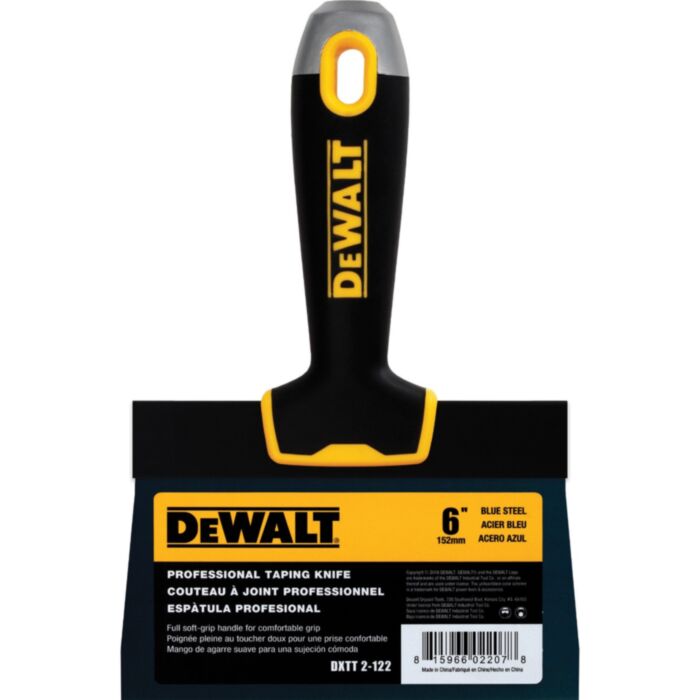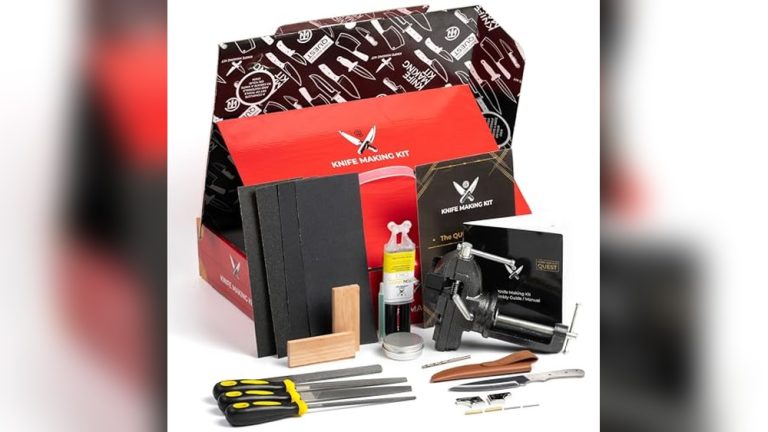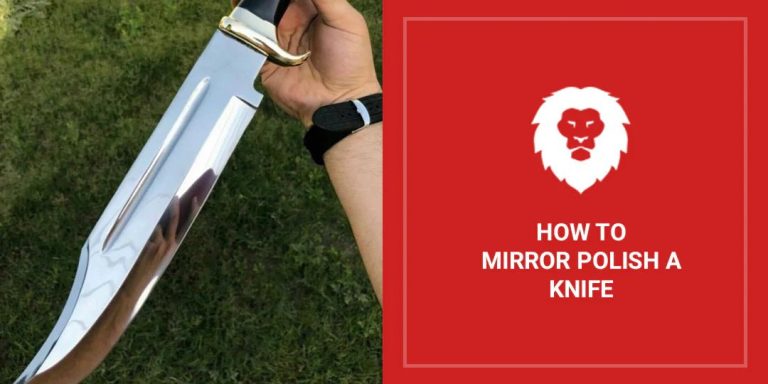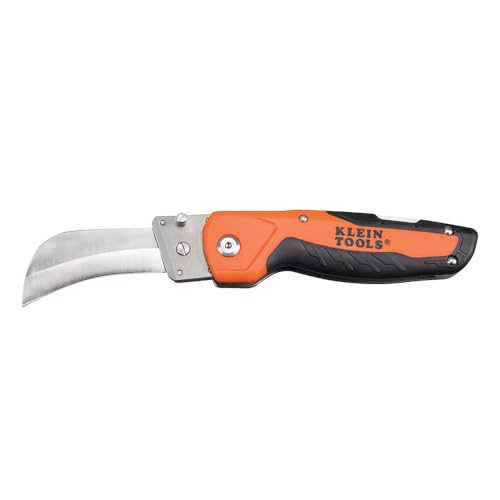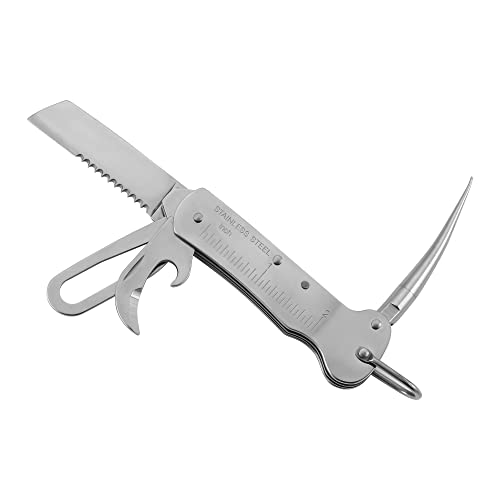Blue Steel Vs Stainless Steel Taping Knife: Ultimate Comparison
Choosing between a blue steel and a stainless steel taping knife can be tough. Each has its benefits and drawbacks.
This comparison will help you understand which one suits your needs best. Both blue steel and stainless steel taping knives are popular in drywall work. Knowing their differences can save time and improve your results. Blue steel taping knives are flexible and ideal for smooth finishes.
Stainless steel taping knives, on the other hand, resist rust and are durable. This comparison will explore the key features, pros, and cons of each type. By the end, you’ll have a clear idea of which taping knife is best for your projects. Stay with us to make an informed decision.
Material Composition
Choosing between a blue steel or stainless steel taping knife can be challenging. Understanding their material composition helps in making an informed decision. The materials used in these tools impact their performance, durability, and maintenance. Let’s explore the properties of blue steel and stainless steel.
Properties Of Blue Steel
Blue steel taping knives are made from high-carbon steel. This material offers excellent flexibility. It bends easily without breaking. This makes it ideal for smooth and even application of joint compound. Blue steel is also lightweight. This reduces fatigue during prolonged use. It is prone to rusting if not properly maintained.
Regular cleaning and drying are necessary to prevent corrosion. Despite this, many professionals prefer blue steel for its superior flexibility. It delivers a fine finish. Ideal for detailed work.
Properties Of Stainless Steel
Stainless steel taping knives are made from an alloy of steel and chromium. This material is highly resistant to rust and corrosion. It requires less maintenance compared to blue steel. Stainless steel knives are more rigid and less flexible. They are durable and long-lasting.
They are heavier than blue steel knives. This may cause discomfort during extended use. Stainless steel is easy to clean. It is ideal for rougher applications and heavy-duty tasks. It provides a smooth finish but is less flexible.
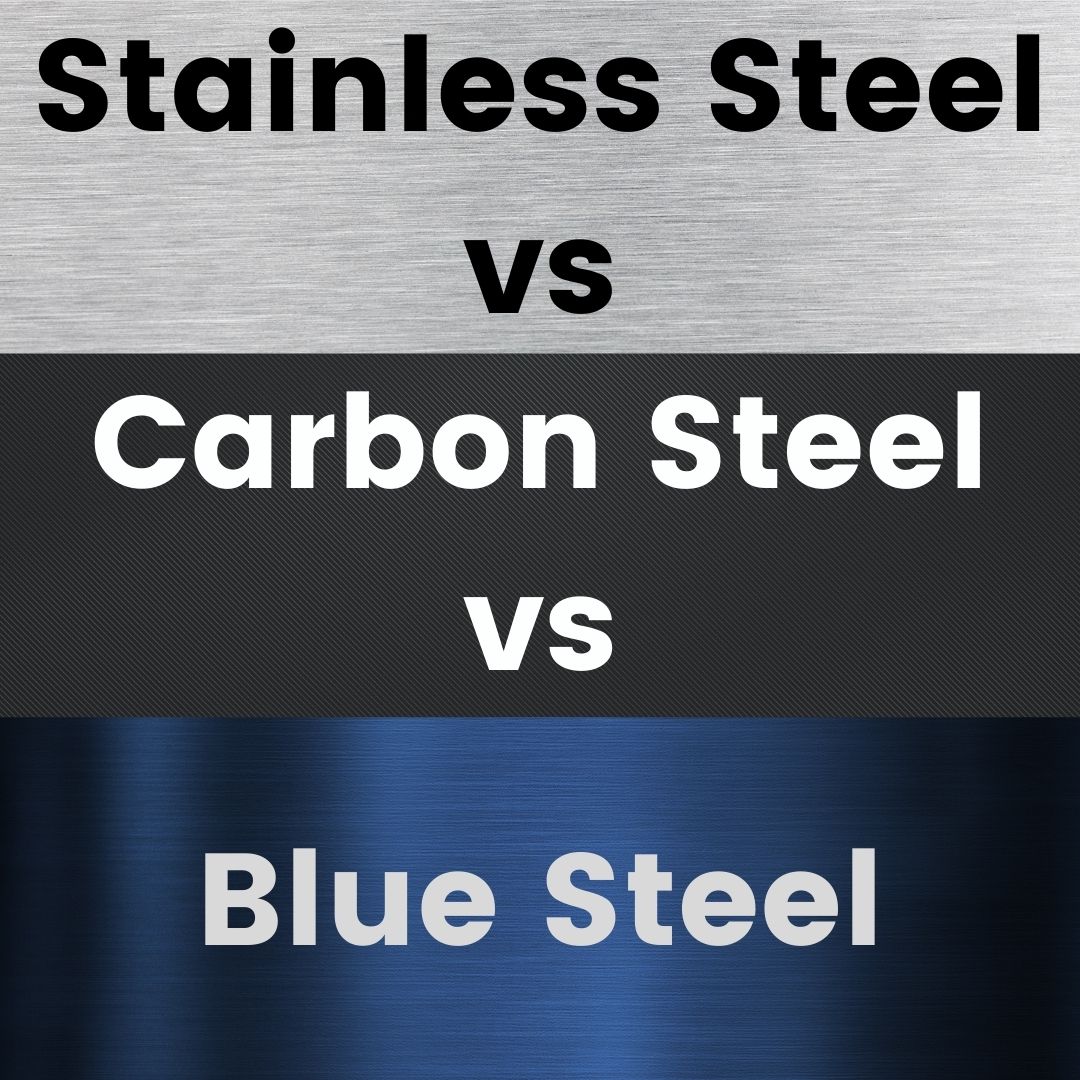
Credit: masterbuildingmaterials.com
Durability
When choosing a taping knife, durability is a major factor to consider. The strength of your tool directly affects its performance and lifespan. Understanding the differences in durability between blue steel and stainless steel taping knives can help you make an informed decision.
Wear And Tear Resistance
Blue steel taping knives are known for their flexibility. This makes them more prone to bending and deformation over time. They offer great performance but may not hold up as well under heavy use.
On the other hand, stainless steel taping knives are more rigid. They resist bending and deformation much better. This makes them ideal for tougher jobs and frequent use.
In summary:
- Blue Steel: Flexible, prone to bending
- Stainless Steel: Rigid, resists deformation
Longevity In Use
Blue steel taping knives require regular maintenance to prevent rust. This can affect their lifespan. Proper care includes drying the knife after each use and applying oil to prevent rust.
Stainless steel taping knives are naturally rust-resistant. They require less maintenance. This increases their longevity. They are a more durable option if you prefer low-maintenance tools.
Key points:
- Blue Steel: Needs regular maintenance, prone to rust
- Stainless Steel: Rust-resistant, low maintenance
Choosing between blue steel and stainless steel taping knives depends on your specific needs and preferences. If you value flexibility and are willing to maintain your tools, blue steel might be the right choice. If you prefer durability and low maintenance, stainless steel is the way to go.
Flexibility
Flexibility in taping knives is crucial. It affects how well you can smooth out and apply compound. The right flexibility can make your work easier and more efficient. Let’s explore the flexibility of blue steel and stainless steel taping knives.
Flexibility Of Blue Steel
Blue steel taping knives are known for their high flexibility. They bend easily, allowing for smooth application of compound. This flexibility helps in tight corners and awkward spaces. The blade adjusts to the surface, providing a seamless finish. Due to their flexibility, blue steel knives are preferred for feathering and final coats. They offer a delicate touch, making them ideal for detailed work.
Flexibility Of Stainless Steel
Stainless steel taping knives are less flexible compared to blue steel. They maintain a firmer structure, which is useful for straight and even surfaces. This rigidity helps in spreading thicker layers of compound. Stainless steel knives are durable and resist bending under pressure. They are great for initial coats and large surface areas. The firm blade ensures a consistent application, reducing the need for repeated passes.
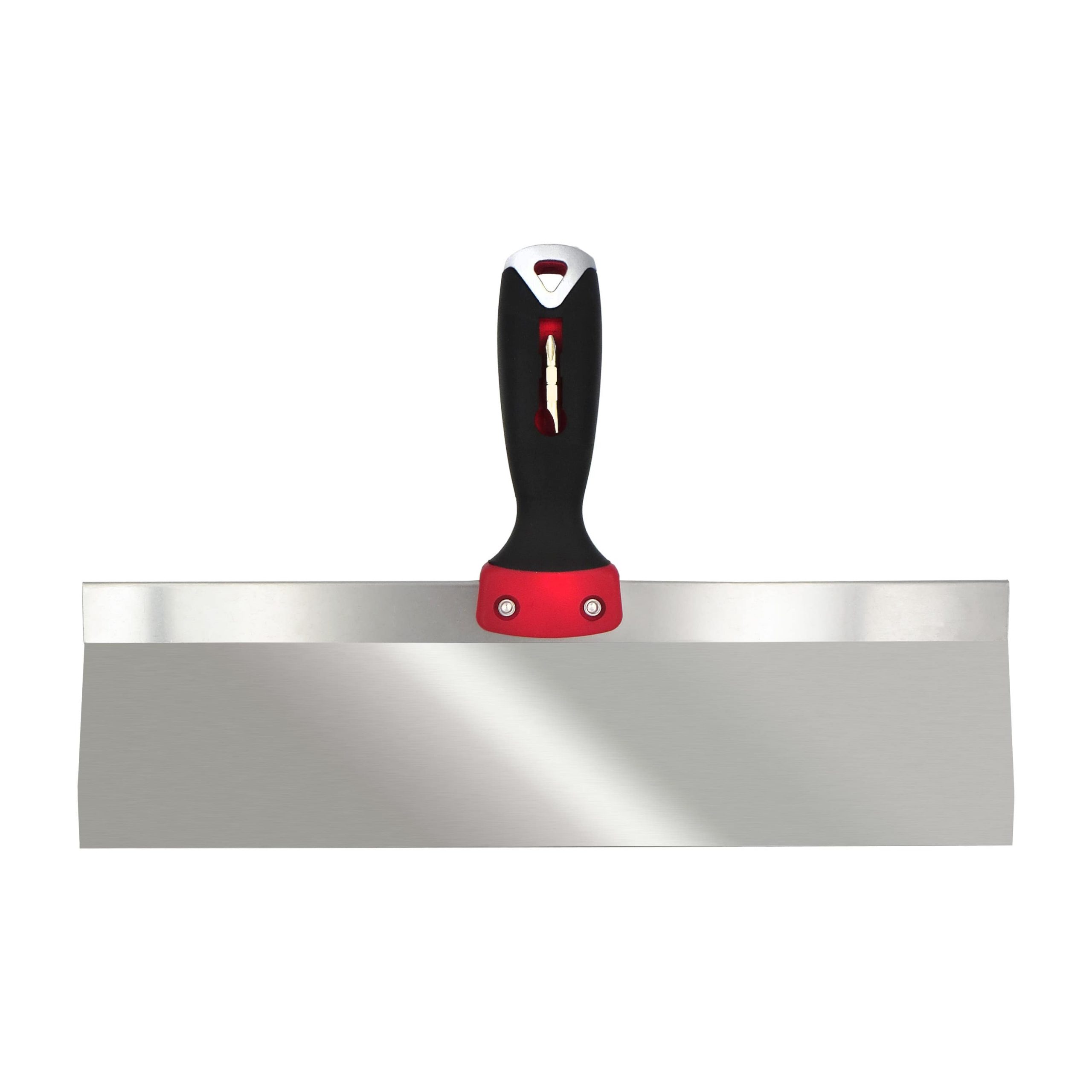
Credit: allwaytools.com
Performance
Choosing between blue steel and stainless steel taping knives impacts your work performance. Each type offers unique advantages. Let’s explore their performance in different aspects.
Application Efficiency
Blue steel taping knives are flexible. They apply compound smoothly. Their flexibility allows better control. This is ideal for intricate details. Stainless steel knives are rigid. They apply compound evenly. This makes them suitable for large surfaces. Their rigidity ensures consistent coverage. Both types improve application efficiency in their own way.
Quality Of Finish
Blue steel knives provide a fine finish. Their flexibility helps in achieving smooth edges. It reduces sanding work later. Stainless steel knives offer a smooth finish too. Their rigidity ensures even layers. This results in a polished surface. Both knives enhance the quality of finish. Choose based on your project needs.
Maintenance
Maintaining your taping knife is crucial for its longevity and performance. Whether you use a blue steel or stainless steel taping knife, proper maintenance ensures it remains effective and durable.
Cleaning Requirements
Both blue steel and stainless steel taping knives need regular cleaning. This prevents dried compound build-up and ensures smooth application. Use warm water and mild soap for cleaning. Avoid using abrasive materials that might scratch the surface.
Blue steel knives require extra care. Wipe them dry immediately after washing to prevent water spots. Stainless steel knives are more forgiving and can air dry without risk.
Rust Resistance
Rust resistance is a key factor in choosing between blue steel and stainless steel taping knives. Blue steel knives are prone to rust if not properly maintained. Always store them in a dry place and apply a light coat of oil after cleaning.
Stainless steel knives have superior rust resistance. They are made from materials that resist rust even in moist conditions. This makes them ideal for humid environments.
Here’s a quick comparison:
| Feature | Blue Steel | Stainless Steel |
|---|---|---|
| Cleaning | Requires immediate drying | Can air dry |
| Rust Resistance | Prone to rust | Resistant to rust |
Regular maintenance of your taping knife ensures it stays effective and extends its lifespan.
Cost
One of the key considerations when choosing between a blue steel and a stainless steel taping knife is the cost. Both materials have unique properties that affect their price and value. Understanding these differences can help you make an informed decision.
Price Comparison
Blue steel taping knives are generally less expensive than stainless steel ones. The lower cost is due to the material’s availability and manufacturing process. Blue steel knives offer an affordable option for those on a tight budget.
Stainless steel taping knives are usually more expensive. The higher price reflects the material’s durability and resistance to rust. This makes them a long-term investment for many users.
Value For Money
Blue steel taping knives provide good value for those who need a reliable tool at a lower cost. They are flexible and can handle regular use, making them a popular choice for many.
Stainless steel taping knives, while more costly, offer excellent value for their longevity and low maintenance. They do not rust easily, which means they last longer and perform consistently over time.
Choosing between blue steel and stainless steel taping knives depends on your budget and needs. Each offers distinct advantages that can make a difference in your taping projects.
User Preference
Choosing the right taping knife depends on user preference. Both blue steel and stainless steel taping knives have their fans. Professionals and DIY enthusiasts have their own views on each type.
Professional Feedback
Professionals value durability and flexibility. Many prefer blue steel taping knives. They find them more flexible. This makes spreading joint compound easier. Blue steel also provides a smoother finish. However, it requires more maintenance. It is prone to rust if not cared for properly.
Stainless steel taping knives are also popular among professionals. They are rust-resistant and easy to maintain. They are less flexible than blue steel. This makes them better for larger jobs. Some professionals appreciate the sturdiness of stainless steel. It can handle more pressure without bending.
Diy Enthusiast Opinions
DIY enthusiasts also have strong opinions. Many prefer stainless steel taping knives. They are low-maintenance and durable. Beginners find them easier to use. Stainless steel is less likely to rust. This is important for those who use the knife infrequently.
Some DIYers prefer blue steel. They like the flexibility and smooth finish. These knives can be harder for beginners to manage. They require more care to prevent rust. For those willing to invest time, blue steel can be rewarding.
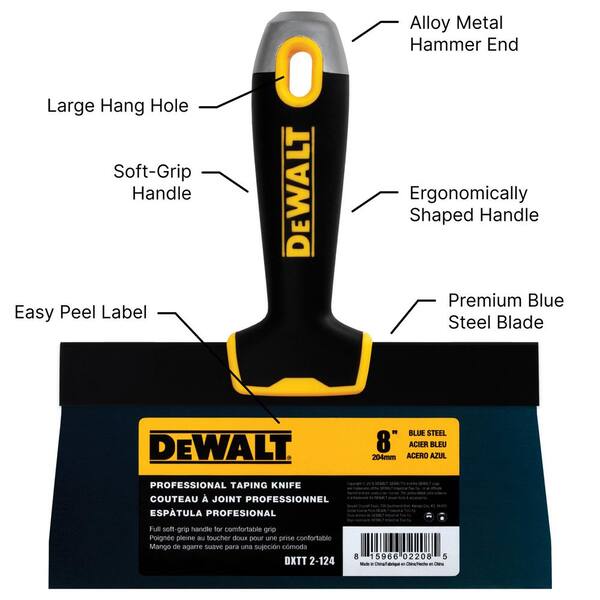
Credit: www.homedepot.com
Frequently Asked Questions
What Is A Blue Steel Taping Knife?
A blue steel taping knife is a flexible tool used for applying joint compound. Its flexibility allows for smoother finishes.
What Is A Stainless Steel Taping Knife?
A stainless steel taping knife is a durable tool used for applying joint compound. It resists rust and provides long-lasting performance.
Which Taping Knife Is More Flexible?
The blue steel taping knife is more flexible. Its design allows for better maneuverability and smoother application.
Which Taping Knife Is More Durable?
The stainless steel taping knife is more durable. It resists rust and wear, making it ideal for long-term use.
Conclusion
Choosing between blue steel and stainless steel taping knives depends on your needs. Blue steel offers flexibility and precision. Stainless steel provides durability and rust resistance. Both have their advantages. Consider your project type and personal preference. Try both if unsure.
Remember, the right tool can make a big difference. Happy taping!

